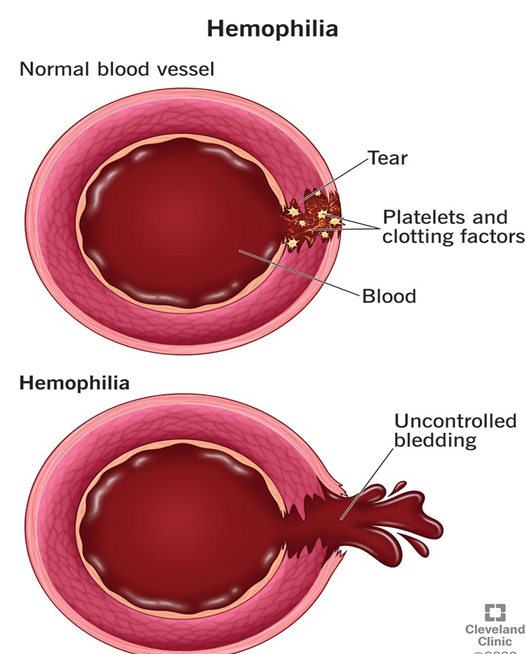The nurse is caring for an infant whose cleft lip was repaired. What important aspects of this infant’s postoperative care should be included?
Cleansing the suture line, upright position, arm restraints
Mouth irrigations, prone position, cleansing the suture line
Frequent oral suction, spoon feed, give them a teething toy
Arm restraints, postural drainage, mouth irrigations
The Correct Answer is A
Choice A reason:
Cleansing the suture line, maintaining an upright position, and using arm restraints are crucial aspects of postoperative care for an infant after cleft lip repair. Cleansing the suture line helps prevent infection and promotes healing. Keeping the infant in an upright position reduces the risk of aspiration and helps with breathing. Arm restraints prevent the infant from touching or rubbing the surgical site, which could disrupt the healing process.
Choice B Reason:
Mouth irrigations and a prone position are not recommended for postoperative care after cleft lip repair. Mouth irrigations can be too harsh for the delicate surgical site, and a prone position (lying face down) can increase the risk of aspiration and breathing difficulties. Cleansing the suture line is important, but the other aspects of this choice are not suitable.
Choice C Reason:
Frequent oral suction and spoon feeding are not appropriate for an infant after cleft lip repair. Oral suction can be too aggressive and may damage the surgical site. Spoon feeding is not recommended as it can put pressure on the healing lip. Giving a teething toy is also not advisable as it can cause the infant to put objects in their mouth, potentially harming the surgical site.
Choice D Reason:
Arm restraints are indeed necessary to prevent the infant from touching the surgical site. However, postural drainage and mouth irrigations are not suitable for postoperative care after cleft lip repair. Postural drainage is not relevant to this condition, and mouth irrigations can be too harsh for the healing tissue.
Nursing Test Bank
Naxlex Comprehensive Predictor Exams
Related Questions
Correct Answer is B
Explanation
Choice A reason:
Basketball, while a popular sport, involves a significant amount of physical contact and the risk of falls and injuries1. For children with hemophilia, engaging in contact sports can increase the risk of bleeding episodes and joint damage. Therefore, basketball is not the most recommended sport for children with hemophilia.
Choice B reason:
Swimming is highly recommended for children with hemophilia because it is a low-impact sport that provides excellent cardiovascular exercise without putting undue stress on the joints. The buoyancy of the water supports the body, reducing the risk of injuries and bleeding episodes. Swimming also helps improve muscle strength and flexibility, which can be beneficial for overall health and well-being.

Choice C reason:
Soccer, like basketball, involves a lot of running, physical contact, and the potential for falls and injuries. These factors make soccer a less suitable sport for children with hemophilia, as it can increase the risk of bleeding and joint damage. Therefore, soccer is not the most recommended sport for children with hemophilia.
Choice D reason:
Skating, whether roller skating or ice skating, carries a risk of falls and injuries. While it can be a fun and enjoyable activity, the potential for accidents makes it less suitable for children with hemophilia. The risk of bleeding episodes and joint damage is higher with activities that involve a significant risk of falls.
Correct Answer is C
Explanation
Choice A reason:
Foster self-care activities: Encouraging self-care activities is important for children with hemiplegic cerebral palsy as it promotes independence and self-esteem. However, it is not the highest priority compared to ensuring the child’s safety and accessibility in their home environment.
Choice B Reason:
Improve the child’s communication skills: Enhancing communication skills is crucial for the child’s social and emotional development. Effective communication can significantly improve the child’s quality of life. However, while important, it is not the most immediate priority compared to modifying the home environment for safety.
Choice C Reason:
Modify the home environment for safety and accessibility: Ensuring the home environment is safe and accessible is the top priority. Children with hemiplegic cerebral palsy may have mobility challenges, and a safe environment can prevent injuries and promote independence. This modification directly impacts the child’s daily life and overall well-being.
Choice D Reason:
Provide respite services for the parents: Offering respite services is beneficial for the parents’ mental and emotional health, allowing them to take breaks and recharge. While this is important, it is not the primary concern compared to the child’s immediate safety and accessibility needs.
Whether you are a student looking to ace your exams or a practicing nurse seeking to enhance your expertise , our nursing education contents will empower you with the confidence and competence to make a difference in the lives of patients and become a respected leader in the healthcare field.
Visit Naxlex, invest in your future and unlock endless possibilities with our unparalleled nursing education contents today
Report Wrong Answer on the Current Question
Do you disagree with the answer? If yes, what is your expected answer? Explain.
Kindly be descriptive with the issue you are facing.
